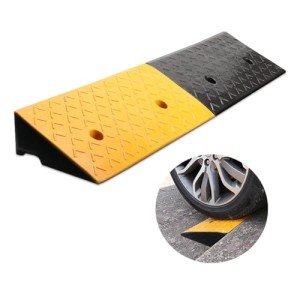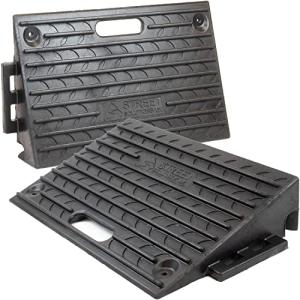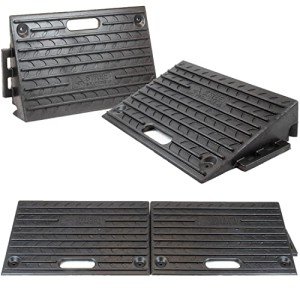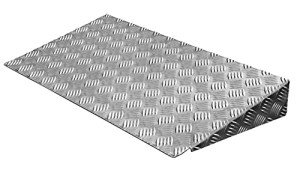In an age where accessibility and inclusivity are paramount, non-slip threshold ramps have emerged as essential tools for individuals using mobility scooters. Created for transitioning from one surface to another—such as doorways, curbs, and steps—these ramps provide a safe and stable route. This guide explores the importance of non-slip threshold ramps for mobility scooters, discussing their design, benefits, and considerations for both users and caregivers.
Understanding Non-Slip Threshold Ramps
Non-slip threshold ramps are designed specifically for individuals with mobility challenges. Unlike standard ramps, they have textured surfaces that reduce the risk of slipping, making them ideal for indoor and outdoor use. These ramps are essential for ensuring safe equipment access, preventing falls, and enhancing the overall mobility experience for users.
Types of Threshold Ramps
When considering the best ramp for mobility scooters, users should be aware of the various types available:
-
Aluminum Ramps: Lightweight yet sturdy, aluminum ramps are resistant to rust and corrosion, making them suitable for all-weather conditions.
-
Rubber Ramps: Made from durable rubber materials, these ramps offer excellent traction and can absorb shock, which is beneficial for both the scooter and its user.
-
Wooden Ramps: Although less common, wooden ramps can provide aesthetic appeal. However, they may require more maintenance to prevent rotting or warping over time.
-
Portable Ramps: Designed for easy movement, these ramps can be folded and stored away when not in use, offering flexibility for users who travel or need temporary solutions.
-
Permanent Ramps: Installed as a fixed solution, permanent ramps can be tailored to specific height and width requirements but are less versatile compared to portable options.
Benefits of Non-Slip Threshold Ramps
The advantages of using non-slip threshold ramps are numerous:
1. Enhanced Safety
The primary purpose of non-slip threshold ramps is to provide a safe transition between surfaces. The non-slip surface ensures that users don’t lose their balance, especially in wet or slippery conditions, thus preventing falls and potential injuries.
2. Improved Accessibility
Non-slip ramps allow individuals using mobility scooters to access various areas of their homes, workplaces, and public spaces without assistance. This independence can greatly enhance the quality of life.
3. Durability and Longevity
Most non-slip threshold ramps are built from durable materials like aluminum or rubber, which can withstand a significant amount of wear and tear. This longevity means that they often remain effective for years, regardless of weather conditions.
4. Easy to Install
Many non-slip threshold ramps are designed for quick installation without the need for professional help. This accessibility allows users to set them up immediately, removing the risk associated with high thresholds.
5. Versatility
These ramps are not just limited to mobility scooters; they can also be used for wheelchairs, walkers, or even as a general aid for anyone who needs assistance in navigating uneven surfaces.
How to Choose the Right Non-Slip Threshold Ramp
When selecting a non-slip threshold ramp, there are several factors to consider to ensure it meets the user’s needs effectively:
Material
All ramps vary in terms of material, and selecting one will depend on the specific requirements of the user and their environment. Aluminum, rubber, and composite materials have unique advantages.
Height and Length
Choosing the appropriate height and length is critical. Users should measure the height they need to cover and select a ramp that has a slope ratio of 1:12, which is the recommended slope for wheelchair and scooter ramps for accessible entry.
Weight Capacity
Each ramp comes with a designated weight capacity. It is essential to ensure that the ramp can support both the mobility scooter and its occupant without compromising safety.
Portability
Depending on the user’s lifestyle, portability may be a deciding factor. For those who frequently travel or need ramps for temporary use, portable ramps are an excellent option.
Non-Slip Features
While all these ramps are designed with non-slip surfaces, checking reviews and specifications will help identify the most effective designs.
FAQs
1. Where can I buy non-slip threshold ramps?
- Non-slip threshold ramps can be purchased from medical supply stores, home improvement retailers, or online platforms such as Amazon or mobility stores.
2. How do I install a non-slip threshold ramp?
- Most non-slip ramps come with basic instructions for installation. Generally, they require no tools and can easily be placed over the threshold or surface transition.
3. Are non-slip threshold ramps suitable for indoor use?
- Yes, these ramps are designed for both indoor and outdoor use, as their non-slip surface helps ensure stability regardless of the environment.
4. What maintenance is required for non-slip ramps?
- Regular cleaning to keep the surface free from debris, leaves, or snow is recommended. For wooden ramps, periodic treatment may be necessary to prevent degradation.
5. Can non-slip ramps be used with all types of mobility scooters?
- Most non-slip ramps are versatile and can be used with a variety of mobility scooters and wheelchairs; however, checking the weight capacity and dimensions is essential.
For individuals using mobility scooters, non-slip threshold ramps are a vital addition that enhances access and safety. By understanding their types, benefits, and how to choose the right one, users can improve their daily mobility experiences. With a focus on safety, ease of use, and independence, these ramps play an essential role in creating a more accessible world for everyone. Whether they are needed for home, work, or public spaces, investing in a high-quality non-slip threshold ramp is a step towards greater mobility and a better quality of life.






